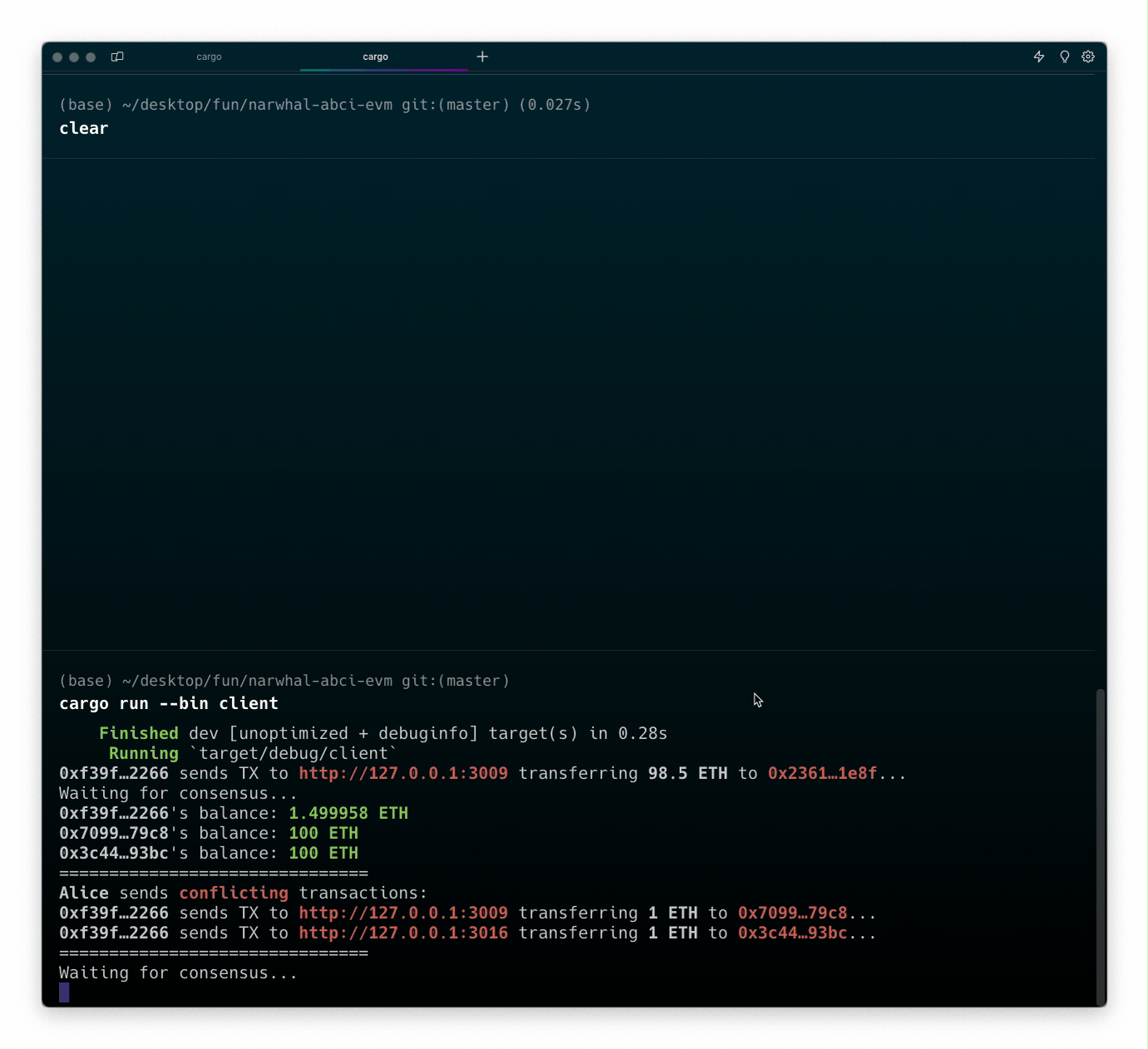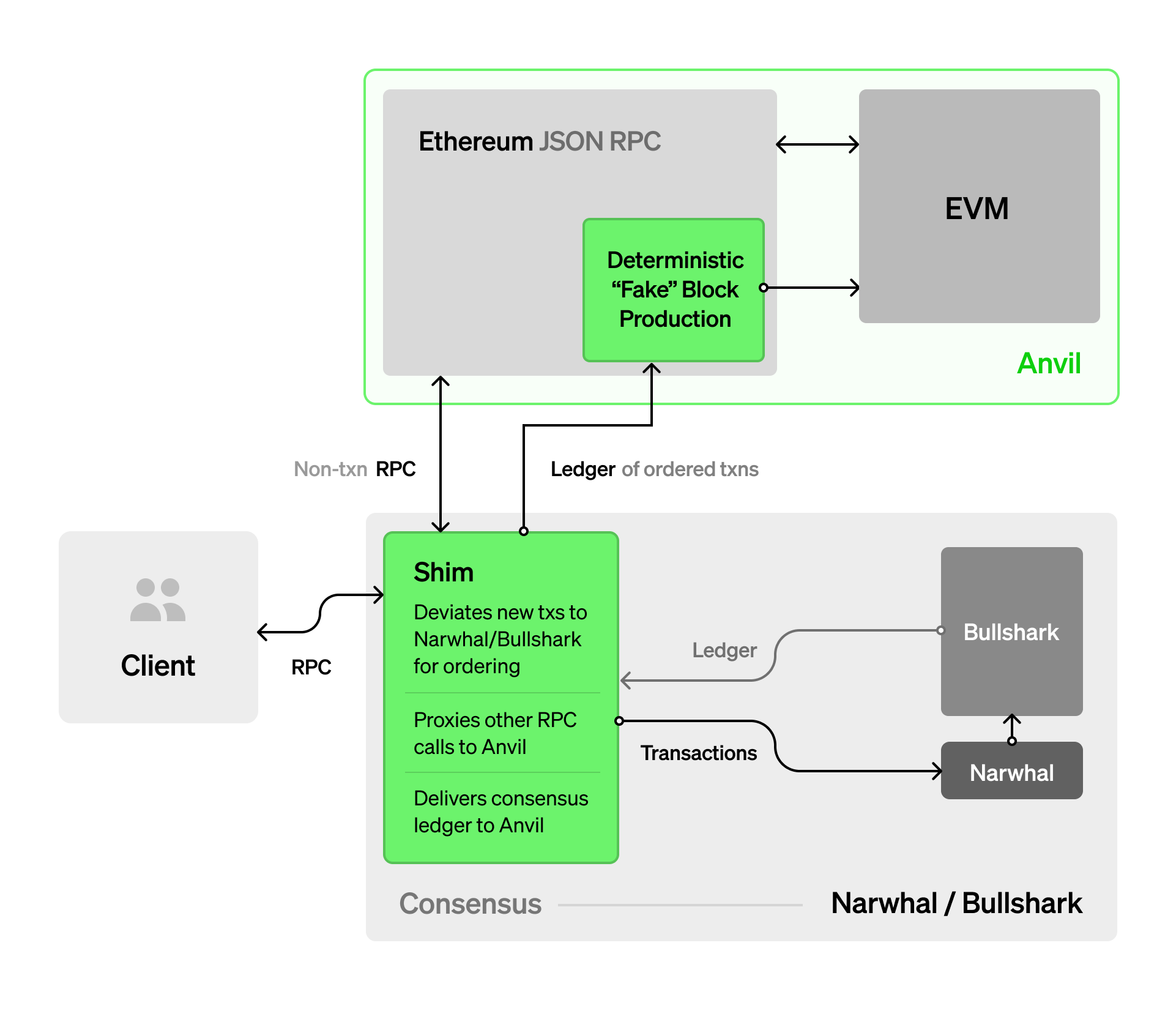
Weld is a proof-of-concept testnet framework integrating Narwhal/Bullshark’s high-throughput consensus with EVM execution powered by Foundry’s Anvil. Find our implementation here.
We’ve built on previous work from Paradigm to run a simple ABCI app consisting of EVM execution on top of Narwhal/Bullshark, but by integrating with Anvil, we have added support for Ethereum’s JSON-RPC APIs.
Components:
The RPC shim redirects all other RPC calls (such as
eth_getBalance, eth_getTransactionCount, etc.)
to Anvil’s Ethereum JSON-RPC.

Image source: Paradigm
Narwhall/Bullshark are a part of a class of DAG-based BFT protocols that emphasize high throughput for proof-of-stake blockchains. It is fundamentally different than existing algorithms such as Gasper (Ethereum 2.0) and Tendermint, giving users more performant and customizable testnets. By using Foundry’s Anvil, we allow users to pick their own consensus algorithms, giving them control over the consensus and execution layer. If users want to use N/B with a different execution environment, they can interface with the RPC that the consensus layer exposes.
We had to find a way to imitate ABCI’s BeginBlock,
DeliverTx, EndBlock, and Commit
hooks using a RPC server instead. We did this by using Anvil’s
--no-mining mode, delivering transactions from each batch
to Anvil and then manually forcing Anvil to mine a block once the entire
batch has been delivered.
Using the RPC shim, we can easily swap out the execution layer with any VM implementations. We can also swap out the consensus layer with any other consensus algorithm that exposes an RPC interface. This allows us to create a testnet with any combination of execution and consensus layers. For example, we can use Tendermint with Anvil or we can use Solana VM with N/B.
Setup/dependencies (from the main folder of the repository):
cd demo && poetry installRun demo (from the main folder of the repository):
cd demo && cargo build && poetry run fab localcargo run --bin clientThe second command will produce output like this:

Video demo of Weld
The demo consensus network is run by four nodes (each running on
localhost), whose RPC endpoints are reachable on TCP ports 3002, 3009,
3016, and 3023, respectively. There are three accounts,
0xf39f (initially 1.5 ETH), 0x7099 (initially
100 ETH), and 0x3c44 (initially 100 ETH).
0xf39f performs a double spend, sending 1 ETH each to
0x7099 and 0x3c44 in two different
transactions that get input to the nodes at ports 3009 and 3016,
respectively. Note that only one transaction can make it. Eventually,
nodes reach consensus on which transaction gets executed in Anvil, and
the application state is updated in lockstep across all nodes. The
update is reflected in subsequent balance queries.
ethers-rs to AlloyWe want to thank Georgios K., Andrew K., Joachim N., and the Foundry team for their initial work.